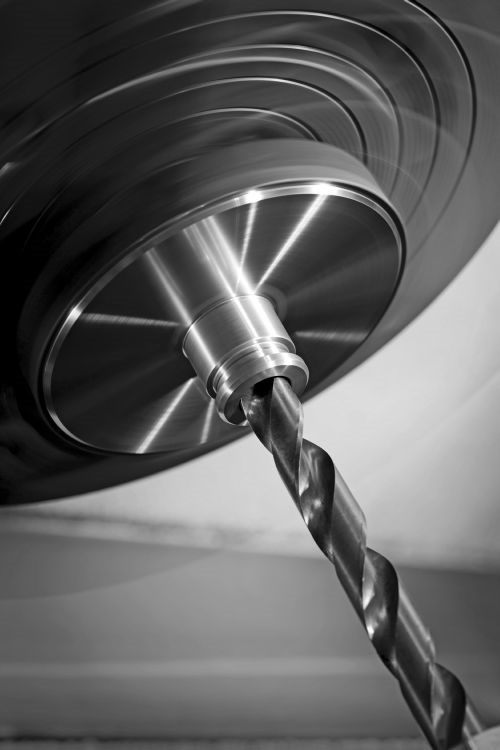Getting the Most out of Drills in your Shop
The three keys are keeping the drill short, getting the feed rate right and replacing the drill on schedule before it dulls.

Here are three of my favorite and most shared ideas to get the most from drills in your shop.
- Keep the drill short.
- Get the feed rate right.
- Replace the drill on schedule before it dulls.
Keep the drill short. Drills need a rigid setup. Having extra length can lead to deflection and drill wander. There is a reason that drills for screw machining applications are short—we need the rigidity. I learned this while working as the metallurgist for a steel bar company. I got a call from a customer that my steel wouldn’t drill straight. After a three and a half hour drive to the customer’s shop out of state, I found a narrow diameter drill (maybe 3/16″) being held in a Jacobs chuck the size of my head, being held on a Morse taper the length of my forearm (or maybe a bit longer). Add to that a very short cycle time, and the drill and chuck never got to a repeatable steady location; they were vibrating until they entered into the next workpiece. They could enter that workpiece at a number of different locations based on that vibration and moment arm. We shortened the setup considerably and suddenly the steel that we provided was drilling straight, true and on center.
Get the feed rate right. When I was learning machining, I was taught that the feed rate determines your success in drilling. After years and years in shops like yours, I am convinced that what I was taught is correct. Yes, the wrong speed can burn up a drill. But getting the feed right assures that the chips break up appropriately. They will flow smoothly down the flutes. Proper feed assures that the drill won’t “chip out” on the cutting edge, and also that the drill itself won’t crack or split up the center from too heavy of a feed.
Planned replacement of the drill before it dulls will make you more parts per shift. This is an under-appreciated way of thinking. In most companies, they have a purchasing culture and want to get the most out of a tool before replacing it. In the most profitable companies, they have a “respect the process” culture that focusses on maintaining process control, not maximum tool life. By replacing the drill before it gets dull, they minimize downtime. They minimize the production of defective parts. They minimize the creation of work hardening in the parts produced prior to tool replacement. This means less downtime, more trouble-free uptime and more parts at the end of the shift. Twenty extra minutes of production on a part with a 10-second cycle time is an extra 120 parts at the end of the shift. Shippable, billable, no-anomaly parts.
There are other factors besides feed that influence drilling, I will grant you that. Proper speed, proper coating, proper geometry, effective delivery of coolant—we could create quite a list. But in my experience, the three factors that hold the secret to productive drilling in our precision machining shops are short, rigid setups; proper feed; and planned or scheduled replacement. These three factors are the keys to getting more parts with less trouble out of your shop.
Originally posted on PMPAspeakingofprecision.com blog.
Read Next
A Tooling Workshop Worth a Visit
Marubeni Citizen-Cincom’s tooling and accessory workshop offers a chance to learn more about ancillary devices that can boost machining efficiency and capability.
Read More5 Aspects of PMTS I Appreciate
The three-day edition of the 2025 Precision Machining Technology Show kicks off at the start of April. I’ll be there, and here are some reasons why.
Read MoreDo You Have Single Points of Failure?
Plans need to be in place before a catastrophic event occurs.
Read More













.jpg;maxWidth=300;quality=90)




